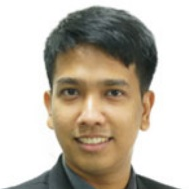Smart Healthcare in the Internet of Things: Recent Developments in a Pandemic Age
A special issue of Sensors (ISSN 1424-8220). This special issue belongs to the section "Internet of Things".
Deadline for manuscript submissions: closed (31 December 2023) | Viewed by 3474
Special Issue Editors
Interests: electrocardiography; failure analysis; fault diagnosis; medical signal processing; moving average processes; public transport; rail traffic; railway accidents; railway industry; railway safety; road accidents; road safety; traffic engineering computing
Interests: medical signal processing; electrocardiography; patient diagnosis; analogue-digital conversion; electroencephalography; signal sampling; wireless sensor networks; biomedical electronics; biomedical measurement
Interests: occupational safety and health; risk analysis; hazard identification techniques; maintenance engineering and management; system reliability and human factors; antifragility engineering; application and utilization of emergent technologies to maintenance and safety topics
Special Issues, Collections and Topics in MDPI journals
Interests: computer vision; data dissemination; disease diagnosis; epidemics; artificial intelligence; medical computing; microorganisms; mobile ad hoc networks; mobility management (mobile radio); natural language processing; routing protocols; telecommunication network reliability; telecommunication network topology
Special Issue Information
Dear Colleagues,
Remote health monitoring has played an increasingly important role, especially in light of the recent era of pandemics. Researchers have identified the feasibility of integrating deep learning, the cloud, blockchain, and the Internet of Things (IoT) to improve overall automation and use it for disease detection and diagnosis.
This special issue aims to focus on the various technologies used in smart healthcare, including: deep learning, blockchain-enabled technologies, cloud-based IoT applications, fog computing in smart healthcare, and the challenges and issues faced by smart healthcare. Applications may include disease prevention and diagnosis, health and patient monitoring, mobile health and remote surgery.
We welcome submissions that include, but are not limited to, the following broad range of topics:
- AI-driven methods for resource allocation for Healthcare Applications in secure Edge Computing applications
- Energy efficient and secure Ambient Assisted Living for Remote Healthcare Applications
- QoS/QoE monitoring in private and secure mobile healthcare applications and Resources
- Blockchain-Enabled Antenna design methods for Body-centric medical health
- Blockchain-Enabled Power-aware Bio-Nano and MEMS frameworks for IoMT
- Blockchain technologies for reliable and trustworthy computing
- Multi-Omics Enabled Secure Disease Prediction in Distributed Fog Cloud Networks
- Biometric security for medical applications Based on Machine Learning Schemes
- Physiological-based data Blockchain-Enabled protocols for health monitoring
- Resource-constrained security for Mobility Enabled Mobile Applications
- Lightweight authentication and data encryption Schemes Based on Homomorphic Techniques
- Physical layer security for Healthcare Digital Conferencing
- Machine Learning as a solution and risk factor for Healthcare IoT security Systems
Prof. Dr. Arnab Majumdar
Dr. Wen-Te Liu
Dr. Alberto Martinetti
Dr. Orawit Thinnukool
Guest Editors
Manuscript Submission Information
Manuscripts should be submitted online at www.mdpi.com by registering and logging in to this website. Once you are registered, click here to go to the submission form. Manuscripts can be submitted until the deadline. All submissions that pass pre-check are peer-reviewed. Accepted papers will be published continuously in the journal (as soon as accepted) and will be listed together on the special issue website. Research articles, review articles as well as short communications are invited. For planned papers, a title and short abstract (about 100 words) can be sent to the Editorial Office for announcement on this website.
Submitted manuscripts should not have been published previously, nor be under consideration for publication elsewhere (except conference proceedings papers). All manuscripts are thoroughly refereed through a single-blind peer-review process. A guide for authors and other relevant information for submission of manuscripts is available on the Instructions for Authors page. Sensors is an international peer-reviewed open access semimonthly journal published by MDPI.
Please visit the Instructions for Authors page before submitting a manuscript. The Article Processing Charge (APC) for publication in this open access journal is 2600 CHF (Swiss Francs). Submitted papers should be well formatted and use good English. Authors may use MDPI's English editing service prior to publication or during author revisions.









